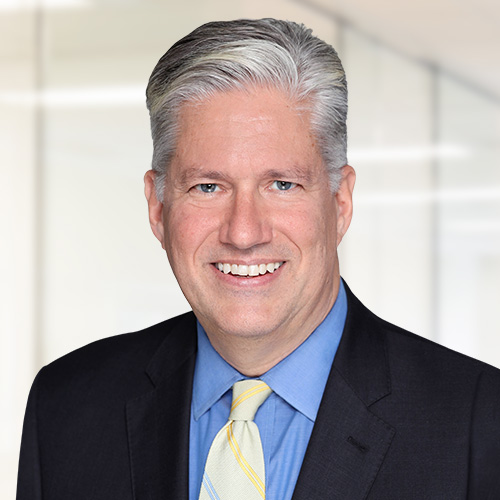Hi, my name is Jean-Eric Parisien. I’m the client relationship manager at Global Alpha and I’d like to welcome you to our first podcast.
Now that the third quarter has ended in what has been a volatile year so far, we wanted to reflect on the events that they impacted, the markets, and the economy.
Robert Beauregard, our CIO, will be answering some of the questions that have been on investors’ minds lately.
Jean-Eric:
Robert, warehouses are full yet supply chains are still strained and shipping costs are rising, fueling inflation.
How can central banks and regulators fix these problems?
Robert Beauregard:
Well, good morning, Jean-Eric. This is not an easy question, but actually freight costs have been coming down lately. The container freight benchmark, that is the price to ship a 40-foot container on eight different major routes is back down to $3,700 after peaking at $10,300 in September of 2021. It was $1,600 at the end of 2019.
However, the supply chain situation is still difficult. As you know, you can have a whole car but if you miss one part like a semiconductor, you can’t sell it. Ford has over 45,000 pickup trucks parked on a speedway in Kentucky.
The energy crisis in Europe is causing an impact in the production of some materials.
Central banks can’t do anything on the supply side. Their mandate is to curb inflation. Through monetary tightening, that is interest increases and withdrawal of liquidity from the financial markets, they are working on reducing demand.
It may take a few more quarters to see clear evidence. The U.S. job market is still strong. There is a lot of pent up demand still after a few years of COVID and the accumulated savings are still high.
From a government perspective, efforts will take years to make the supply chain more robust.
But in the short term, removing barriers to trade such as tariffs or restrictions may help. We are not seeing that happen at the moment, on the contrary.
There remain a lot of risks on the global supply chain. China still has a COVID zero policy.
The war in Ukraine is shutting down the supply of raw materials from Russia to much of the world.
Taiwan is a key producer of semiconductors. Any conflict there or major natural disaster, the Island is prone to earthquakes, would take a huge toll on the global economy.
In conclusion, despite many cross-currents, goods inflation should come down.
However, the largest component of inflation, wage and rent inflation, may not come down for another few quarters and will do so if unemployment rises and house price go lower.
These are the indicators the central banks will watch, and they will keep raising rates until they see it.
Jean-Eric:
Thank you Robert, you just alluded to it, but how will increasing rates impact inflation and equities?
Robert:
Historically, rising rates are negative for interest sensitive equities, like real estate and utilities. Companies with high debt are particularly affected. Consumer staples and commodities are normally beneficiaries.
In this particular environment, we are coming from historically low rates, rising rates will affect high growth, low profit companies, as the discount rate of future profits is going much higher.
Sectors like technology and biotech which have come down may have more pain ahead.
In the past, rising rates and high inflation have been favorable to small cap outperformance. The argument has been that smaller companies are nimbler to adjust to high inflation.
In a rising interest rate environment, we expect stocks with pricing power which are highly profitable today and with low leverage to outperform.
Small cap historically traded at a premium to large cap peers, but currently are trading at a discount.
MSCI World Small Cap Index trades at 11x next year’s earnings vs large cap at 13x, the S&P at 16x and the Nasdaq is still above 20x.
The best period of outperformance of small cap vs large cap was the stagflationary period of 1974-1983 followed by the 10 years from January 2000 to December 2010.
Jean-Eric:
You also referred to China earlier, can you talk about how we at Global Alpha view the country? How are our strategies exposed to it?
Robert:
We are cautious on China due to high political risk and the risk of full blown real estate crisis.
However, the country has numerous tools to address imbalances. It is the second largest economy in the world and we still see numerous investment opportunities. Particularly in the consumer, healthcare and industrial sectors.
We favour companies who produce and sell their products in China. We also try to avoid sensitive sectors such as technology, natural resources or infrastructure.
Our view is that the country should gradually re-open from 2023 and we expect ongoing greater stimulus measures after the party congress to be held on October 16th.
We still like China’s consumer market. Although there are uncertainties in the economy in the short term mainly due to the zero COVID-19 policies, consumer spending holds up relatively well, Aug retail sales increased by 5.4% year over year, an improvement from July and better than expected and there is a lot of pent-up demand when the government loosens the restrictions.
Jean-Eric:
The US dollar has been rising steadily. What are the reasons behind this increase? Any consequences on small caps and on our portfolios?
Robert:
Former U.S. Treasury Secretary John Connally’s famous quotation, “The dollar is our currency, but it’s your problem,” continues to ring true, and this is one reason why some countries have been working so hard to de-dollarize over the past decade.
Why is the dollar so strong?
The Fed has been more aggressive than other countries to curb high inflation. Federal fund rates increased from near zero at the beginning of 2022, to a range of 3%-3.25% at the September FOMC meeting. Markets are expecting at least another percentage point increase, by the end of 2022. Much higher than other developed economies.
Despite recession fears, the U.S. economy still looks better than other advanced economies, including UK, Europe, and Japan. With a war in Ukraine, energy crisis in Europe and the struggling economy in China due to zero COVID policies, investors tend to flow to safe-haven investments, USD is a safe haven at the moment.
However, we see the US dollar strength peaking due to the fact that the differential between real rates and economic growth rate is peaking.
European and Japanese firms will be beneficiaries of the strong dollar. And large U.S. multinationals will be hurt.
Also, a strong USD could mean more M&A activity from U.S. companies looking to pick up European and UK assets which we have witnessed already.
Jean-Eric:
Where are the opportunities in Europe with an imminent recession in Germany, political uncertainties in Italy and the entire zone trying to fight off the rampant inflation?
Robert:
The Ukraine crisis has had a direct impact on energy cost. This has brought light to Europe’s dependence on Russian energy.
We think this will help the Green Revolution even further as renewable energy becomes an answer to the problem. Green hydrogen is already competitive in Europe.
Sovereign security is another concern for e.g. Norway recently announced emergency preparedness to protect its O&G facilities in the North Sea from drone attacks. We will see a lot more increased spending on defence and cybersecurity.
As Europe is shifting away from Russia’s energy, the demand for renewable energy is increasing, we believe there will be opportunities in this area.
Europe is becoming more integrated than ever, a positive:
Opportunities stemmed from Russian/Ukraine war are from goods substitutions requirements starting with commodities and staples.
European equities are trading at a larger discount today than during the Great Financial Crisis.
Balance sheets in general are in a better position than pre-COVID and our holdings even more so.
Many governments providing fiscal support against rising energy prices. Combined with low unemployment rate and excess savings accumulated during covid, European consumer is surprisingly resilient.
Jean-Eric:
Now that we made the regional tour through Asia, U.S. and Europe, did we make any change to our model since the start of COVID or since the start of the war in Ukraine?
Robert:
The first step is to find good companies with a potential upside of least 50% / a three-year period with a clear catalyst.
Both our global and international small cap strategies do not invest in Russia nor in Ukraine as they focus solely on developed markets. In our EAFE strategy, 55% of the allocation is in Europe; in our global strategy, the allocation is approximately 25%. Our names in the region are mostly concentrated in the western part of the continent (France, Italy, Germany and Spain), in Scandinavia and in the United Kingdom.
We are constantly evaluating the impact of macro risk on our portfolio, whether it is COVID, Ukraine or inflation. We try to understand where the risk lies for our companies and understand what the mitigations are being implemented.
Our portfolio construction process is to isolate company risks from factor risks such as currency, country, style, liquidity.
Since the start of COVID, interest rates, stock market volatility and liquidity risk have increased.
We have made small changes to the portfolio to mitigate these risks but not many as we believe they are temporary and shorter than our investment horizon.
Jean-Eric:
And, to conclude, is there anything that keeps you awake at night right now with the volatility that we see on the market and with everything that we discussed? Any concerns or any threats to the portfolios?
Robert:
We are managing small cap equity portfolios. So, for us, the asset mix decision that our clients may make is probably the main threat. If they decided that they no longer wanted to be exposed to equities because they can get the returns they want by buying government bonds. Well, that would be a threat. We are not there yet.
Also, looking at the various asset classes, a lot of money has gone into illiquid assets in the last few years. Most of it was driven by low rates. You would invest in real estate or infrastructure in search of yield that you could not get from government bonds and, to top it off, you could use leverage to juice up these yields. That being said, I would be probably more insomniac, if I was an infrastructure portfolio manager at the moment.
Looking at large cap, a lot of money has gone into U.S. For the last five years, it has been an easy trade.
I think it’s a great opportunity right now to diversify.
Another area that certainly keeps me awake at night is the geopolitical situation.
I was born in 1964. The last time that people talked about nuclear war was in ‘62. None of us has ever been exposed to that risk. But that would certainly be a catastrophic outcome. However, this is probably a low risk, but certainly one that could keep many of us awake at night.




